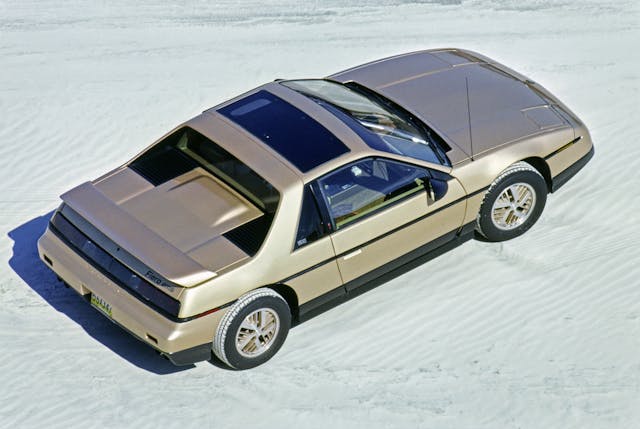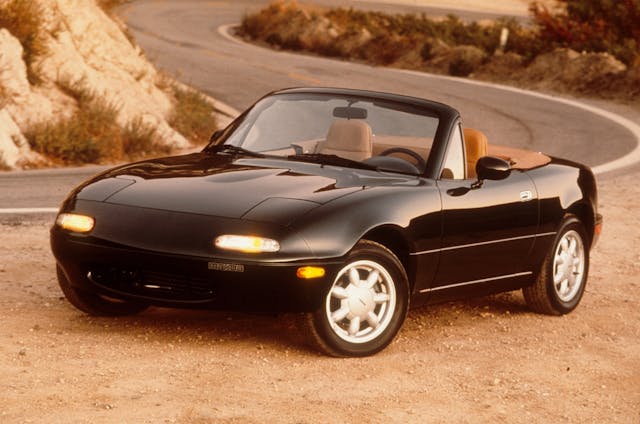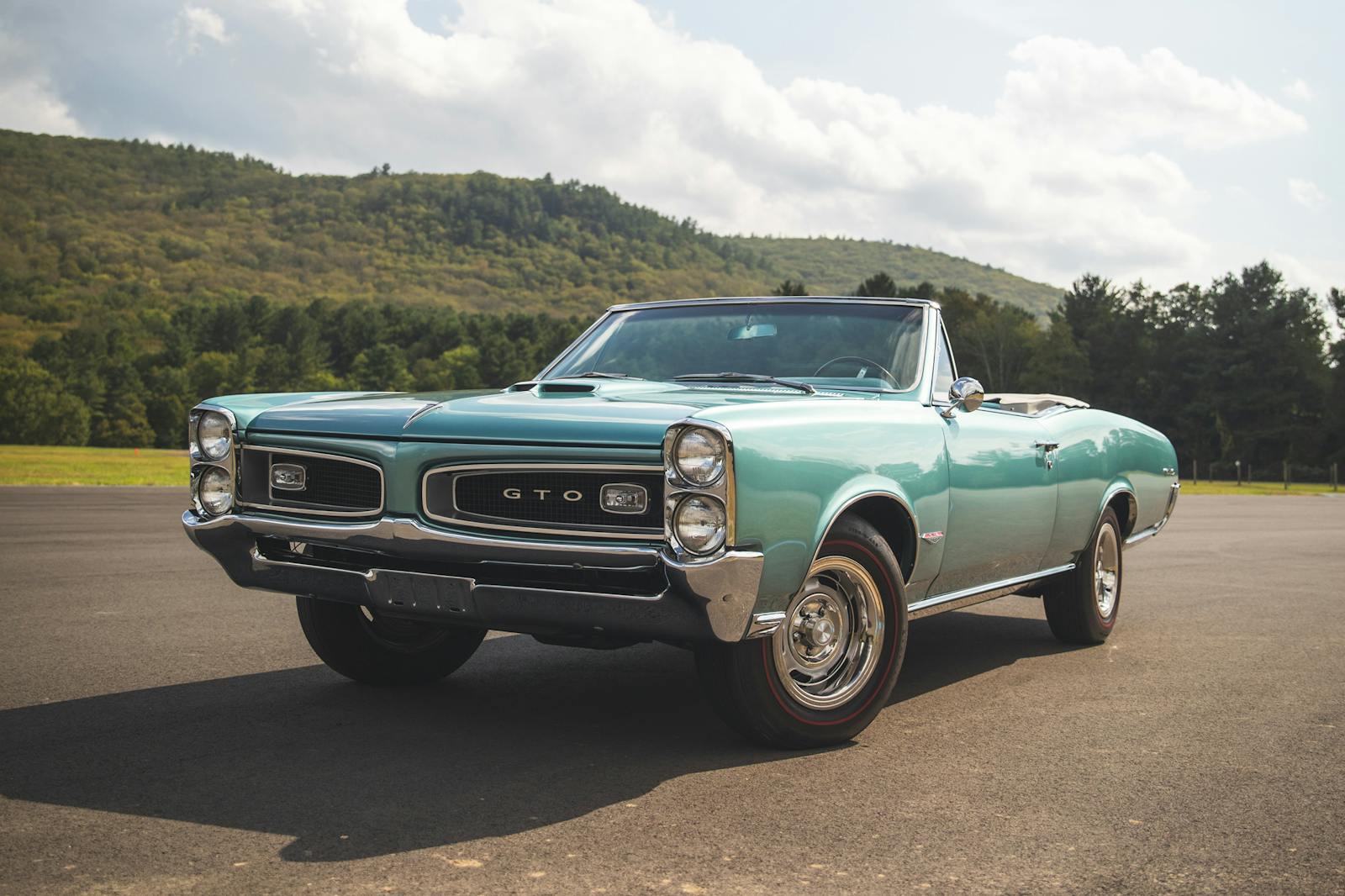From Diesel to Dirt, These 5 Vehicles Gained Ground in a Slow Market
It’s been an eventful summer for the collector market. On one hand, it shows obvious cooling, with even our Hagerty Market Rating settling back to pre-pandemic levels. On the other hand, while it may seem like the entire market would follow suit, there are still some bright spots. Gains are becoming more nuanced, though, as pickier buyers are more willing to pay big sums for a rare, exceptional example as well as more willing to pass on more average or common ones.
Our latest quarterly update of the Hagerty Price Guide is now live, and below we look at the most noteworthy gainers (measured by average increase across year, model, submodel, and condition) of the past three months. As always, if you have questions about how we arrived at these changes, you can read more about the methodology behind the Hagerty Price Guide here.
1986-93 Mercedes-Benz 300D/E300 Diesel

Average increase: +68%
Old Mercedes-Benzes have a well-deserved reputation for toughness and over-engineering, including the W124 platform of the 1980s-90s and especially the diesel models. While performance versions of the W124 and early AMG models have enjoyed attention and big prices, diesel Benzes of this era more or less remained cult classics. Earlier models have already gained wider attention, but it appears that newer models have gained wider appreciation.
Over the course of the summer, a handful of low-mile oil-burner W124s hit the market and brought big numbers, including a six-figure result from an 8400-mile example. While more transactions are needed to call these more than just outliers, these results drove a huge gap between our #1 (“concours”) and #2 (“excellent”) values. While a no-mile, perfect example may be worth in the range of $80,000 these days, a more driven example that has still been maintained exceptionally is worth about half that. The reason? Well, when was the last time you saw a no-mile W124 with a diesel? These cars are considered to be just broken in at 150,000 miles. Just as noteworthy is the fact that crusty and neglected examples in #4 condition were not helped by enthusiasm at the top of the market. In fact, poor-condition cars actually slid in value slightly to just below $3000.
It seems that collectors are willing to pay seemingly absurd amounts for unused cars, while enthusiasts looking for a car to simply drive and enjoy can still accomplish that with relative affordability.
1988-91 Honda CRX Si

Average increase: +25%
Along with the Civic Si, the CRX Si helped Honda cement its reputation for delivering small, spunky compact cars to the masses that punched above their weight class and sold at competitive prices. Given Honda’s propensity to deliver practical and efficient subcompacts at the time, the CRX is even more noteworthy. Here you have a two-seater with a distinctive short wheelbase and aggressive kammback style. It looks bonkers, and is a hoot to drive. The sporty Si (sport injected) model came with a D16A6 engine making barely 100 horsepower, but in a car with a car weighing just a hair over a ton.
The CRX is a beloved car among OG Honda enthusiasts. It has a stellar reputation as a driver and clean examples are highly sought after, particularly the more refined second generation models (1988-91). Over the summer, a number of stock examples hit the market, all trading for strong prices. While driver-quality cars have been out of the realm of truly “cheap” for a while, #3 (“good”) condition cars have crept out of the sub-$10K range and have been trading for closer to $12K. If you happen across an excellent condition example, however, be prepared to shell out $30,000 and up.
These cars have been out of production for over 3-decades now and unmolested examples are getting harder and harder to come by, so while this feels like a lot of money for a car that used to trade for less than half what they used to less than a decade ago, don’t expect these to get any cheaper as Honda enthusiasts snatch these up.
1991-97 Toyota Land Cruiser FJ80

Average increase: +19%
Land Cruisers have always had a bit of a cult following, especially the 80-Series. It’s the last of the lineage of the Land Cruiser as it was originally formulated with solid axles and an inline-six engine. A set of triple locking differentials makes for a crazy capable SUV and the amenities inside were above and beyond what was standard for the market at the time. Simply put, it was the most well-rounded and most capable of the original Land Cruisers. The 80-Series is to Land Cruisers what the 993 is to air cooled Porsches, and much like 993s, enthusiasts are willing to shell out big sums for 80-Series in the right condition.
For the most part, these SUVs accumulated tons of miles, and it’s not uncommon for clean, maintained examples with hundreds of thousands of miles to still bring close to $20,000. However, that is not where we are seeing most of the market movement. Much like the diesel W124 Mercedes, the real divergence comes in with the low-mile (sub-100K miles is barely broken in over in 80-Series land), well-preserved trucks. Buyers are shelling out good money to the tune of $50,000 and up for them. For an FJ80 in truly like-new condition, though, we’re now looking at six-figure prices.
A recent transaction at $170,000 for a 4200-mile truck shows just how high enthusiasts are willing to go for the right example. Sure, a sale that high is still an outlier, but it does prove that there is appetite out there. Most of these trucks are in used condition and are still perfectly enjoyable and somewhat attainable classic trucks in the sub-$30K range. It’s only for the cream puff collector-grade Land Cruisers that you’ll need to dig deep in that wallet.
1984-88 Pontiac Fiero

Average increase: +17%
Once upon a time, Pontiac wasn’t afraid to get a little bold or even a little weird with their creations. While the other GM brands tended to play it safe, Pontiac’s legacy of pushing the boundaries and not taking no for an answer from corporate gave us some memorable innovations. Some were segment defining hits like the GTO and others never managed to capture the public’s imagination (*coughs in Pontiac Aztek*).
Take the Fiero, for instance. With it, Pontiac sought to serve an unserved market. Back in the early ’80s, unless you were willing to buy a Fiat, there was no affordable way to obtain a sporty, mid-engine two seater. Pontiac sought to enter that space with an economical but sporty two seater with Bertone-esque looks. Initial reviews were positive, but lack of power was an Achille’s heel for the car until the GT came along with an available V-6 engine. Perhaps the most memorable issue was a fiery one for the Fiero. It quickly gained a reputation for hucking rods and catching fire. While GM did solve the issue, the stigma has always stuck. Toyota would prove the idea had legs with the MR2 not long after, but for Pontiac, the damage was done.
While the Fiero has been and remains a cheap enthusiast car, it’s 17-percent hike in value is notable, and when we wind the clock back a full year, Fieros have gained on average 25-38 percent, meaning that while pristine Fiero SE would’ve run you $11,000 a year ago, that same car is just over $15,000 today. Just as noteworthy is that the more desirable GT has remained steady in the same time period. Maybe our forgotten friends are getting the love they deserve. Maybe the stigma is wearing off. Either way, it’s a good day when we get to talk positively about a car that is so often ignored.
1990-97 Mazda Miata

Average increase: +16%
Mazda’s Miata has been the answer to all your drop top needs for over three decades. It is small, nimble and doesn’t offer you anything you don’t need. When it came out at the dawn of the 1990s part of its appeal was that it was like a classic British roadster without the issues, but now early first gen (NA) Miatas are old enough to be classics in their own right.
NA Miatas have been outside the realm of truly cheap for some time now. You used to be able to pick up a pristine example for $10K about a decade ago, but now that same car will run you as much as a well-optioned brand-new 2024 Miata. We live in strange times indeed. While most conditions saw a bump, the real rise in value came to the truly perfect condition #1 examples, which rose to $38,700. Much like with the Benz mentioned above, there is a clear divergence between #1 cars with zero use from new and #2 condition cars which are still extremely good, but have been enjoyed to a limited extent.
When we’re talking about cars built in large quantities at low prices for the driving enthusiast, delivery mile only cars are exceedingly rare and it is becoming clear that collectors wanting the cleanest of clean are willing to pay up when the opportunity presents itself. For the rest of us who prefer to drive our cars as intended, an NA Miata is still an attainable car at under $15K.



Our four kids all drove the same 87 Land Cruiser as teenagers. It proved indestructible, even though over the years we replaced every body panel but the roof. We sold it to a local college student, and our youngest (who unknown to me had retained a key) and her best friend would “steal” it, i.e. go to the college parking lot and simply move it to another parking place. I wonder if he ever noticed…
I had two 1987 Diesel that were great cars. The one got totaled with 250,000 miles the other one I sold with 375,000 miles. The cars were fairly bullet proof. Early on they had radiator issues with the radiators having plastic tanks that would fail at around 25,000 miles. If you didn’t immediately pull over when they would break the car would overheat and wrap the head. Several years in Mercedes fixed the problem. This was when Merecedes A/C was marginal at best. It went through A/C units every approximate 75,000 miles and they couldn’t cool the car when temperatures were a bit above 80 degrees. These cars were well built, and the vinyl interior was almost bullet proof. I also have a 1999 diesel that has 397,000 miles on it. The drive train in the 1999 is superior but build quality of the 1987 was superior to the 1999. I have put 1,300,000 miles on Mercedes Diesel. They are great vehicles when you are driving 40 to 50,000 miles a year for work.
I had a used aluminum radiator that fit installed had no problems. Replace the GM air conditioner pump (boat anchor) with a Japanese denso unit. No problem afterwards. Car still vapor locked unless it was below freezing (🤣)
Thanks for your choices. I don’t understand the nay-sayers on any brand. Personal preference is simply that !!!
I’d be interested in opinions if they were not so biased. Gearheads don’t need to behave like rednecks on a bear-hunt. Just enjoy the ride !!!
Have one 2002 and love it !! Great ride no issues !!
I take these figures skeptically.
Like on the Fiero only a V6 car and in prime condition is bringing these numbers. A GT or well modified car May bring more.
I love my Fiero but I also understand the market. Mine I can easily get over sticker that I paid years ago. That is a win. But these are not investment cars by a long shot. Many may look good but if you pull the trunk carpet you will see the ground.
I will call it collectable but not an investment.
Bought a 1984 Fiero SE with 25,900 miles last November. What a hoot. Going to first car show tomorrow the 20th.
One point of this article jumped out!! Low mileage cars in good condition sell for much more than “driver” cars. The reason is SIMPLE. These cars have gadgets and computers that often are not repairable or available. Good luck fixing a high mileage version to just drive and enjoy for reasonable money. If you really want one where everything still works, and will for awhile, you are competing for a very small number of available low mileage examples. The higher mileage version are just beaters you buy cheap and drive until so many things quit that the hulk goes to the crusher.
About 25 years ago I had a dark red 88 Fiero GT with low miles and the rare T-top and 5-speed. The engine was slightly worked and I do not think I’ve ever owned a better handler. It handled like it was on rails in the corner with that mid-engine 2.8L V-6. Also, though I am 6′ 2″ it had all the legroom in the world with two-seats. All that said, I only had it for a year or two. Let’s just say it was not the most mechanically sound weekend car I’ve ever owned.
I’d try one again, maybe. It was a LOT of fun.
I have owned several British cars and still have a few but more into old Corvettes now a days. But the one that I sold a long time ago I would buy back in a heart beat. Was my 1987 Feiro GT fun to drive great power for it’s size .
Yup I didn’t care for the Pontiacs very much…I found a lot on fire…. And do the darn things always had the engine on fire…exotic metals burning were always a problem…of course Class. “d” extinguishers did a great job smothering that issue..if your Engine carried one.
I
1969 I bought one of the first Triumph TR-6. After the warranty ended I began a long journey of replacing master & slave cylinders, every electrical component, transmission was rebuilt, a used rear end, the Front suspension collapsed not from rust but poor welding, wiper motor broke twice. While it was running I traded for a used 1967 Porsche 911S, I never looked back and drove and bought 7 more Porsche 911s until the early 90’s. Only replaced an oil hose on one of those Porsches.
Kind of surprised no mention of the Opel GT here? In the last few years market value has increased quite a bit on them. (1968-1973 models) . A very nice example sold recently on BAT for $40k. My low mile (46k) 1973 I paid $3,000 for 20 years ago is insured for $35k now. (After doing a $17k “refresh” that has made it basically a new car with added A/C and all new electric harness.) I can live with that!
Not only are the Rex’s hard to find. Any pre 2000 Civic’s and Integra’s are rare in the wild. EG, EK hatches are gold. How about a del sol SI with the rare B series or an EM1 or an ITR? Truly all golden age Hondas should be on the watch.
Is my 2001 miata ok for antique insurance yet